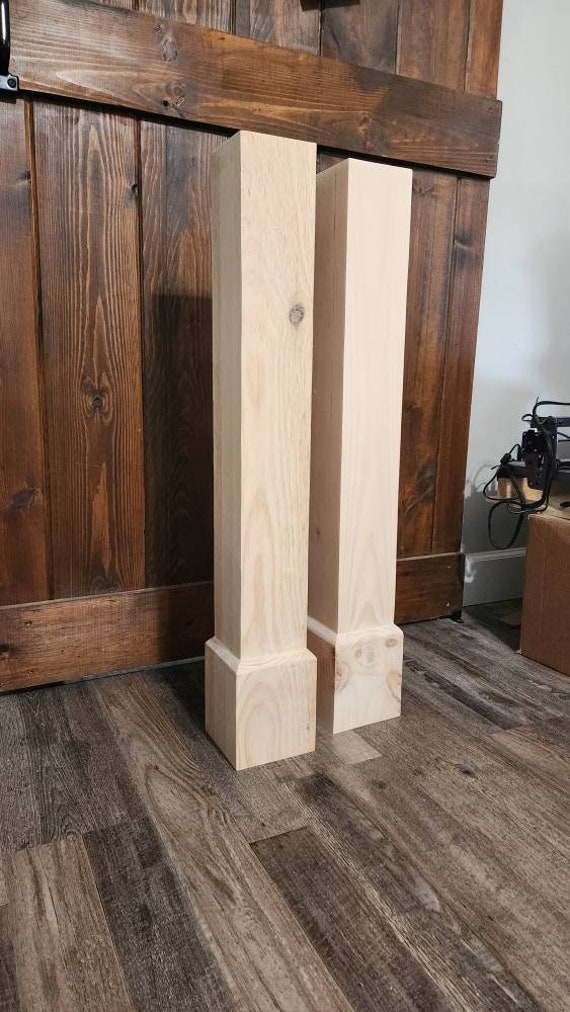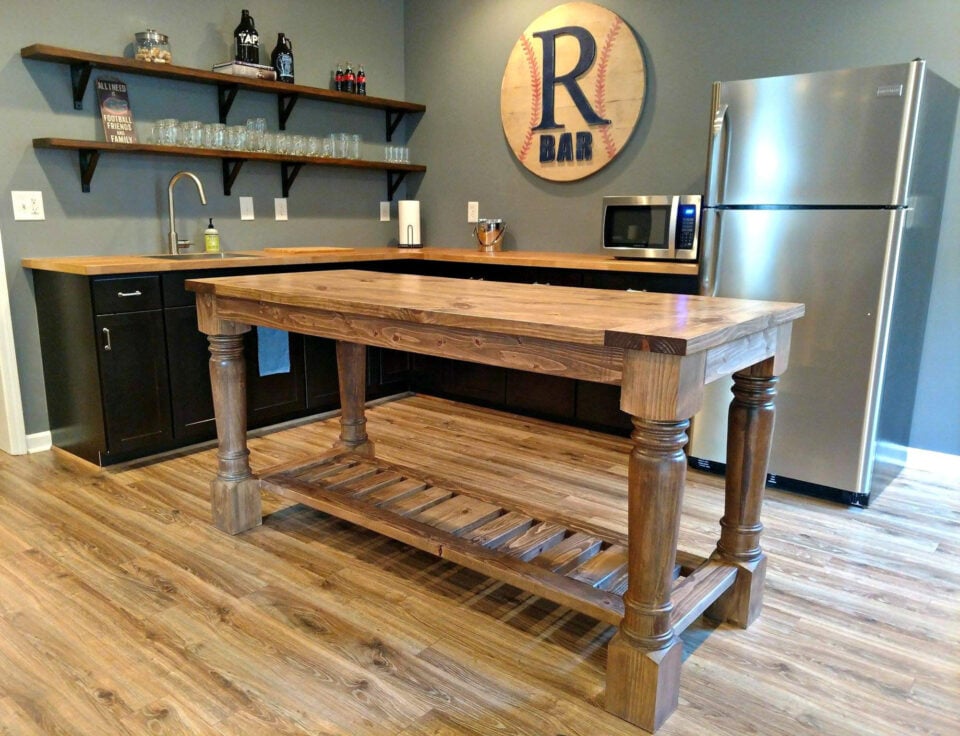How to Include a Kitchen Island Leg into Your Kitchen Remodel
How to Include a Kitchen Island Leg into Your Kitchen Remodel
Blog Article
The Value of a Sturdy Cooking Area Island Leg in Creating a Useful Food Preparation Location
A strong kitchen island leg serves as a basic element in developing a practical food preparation environment, providing necessary assistance for both the countertop and numerous cooking area tasks. As kitchen areas evolve right into multifunctional areas for food preparation, eating, and socializing, the selection of products and design considerations for island legs ends up being significantly vital.
Benefits of Sturdy Island Legs
Giving essential support, tough kitchen island legs play a pivotal role in boosting the capability and sturdiness of kitchen area islands - kitchen island leg. These legs not only birth the weight of the kitchen counter and any type of additional things put on the island, however also contribute to the total stability of the framework. A well-supported cooking area island makes certain that it continues to be functional and upright, also under heavy use, which is particularly important in active cooking area environments
Furthermore, sturdy island legs can improve the aesthetic appeal of the kitchen area. They offer a solid framework that can enhance numerous layout styles, from contemporary to standard. This versatility allows house owners to tailor their cooking area islands according to personal taste while making sure that the architectural stability remains uncompromised.
Along with their helpful duty, durable kitchen island legs can also boost safety. A stable island lowers the risk of accidents brought on by tottering or tipping, which is specifically crucial in houses with youngsters or senior individuals. Strong legs can promote a seamless circulation of activities, permitting for efficient meal preparation and social communications within the kitchen room. Inevitably, buying tough cooking area island legs is vital for a functional and visually pleasing cooking area.
Products for Kitchen Area Island Legs
When picking materials for kitchen island legs, sturdiness and visual charm are crucial aspects to take into consideration. One of the most usual products consist of wood, metal, and crafted timber, each offering unique benefits.
Hardwood, such as cherry, oak, or maple, is a classic selection as a result of its stamina and timeless elegance (kitchen island leg). It can endure significant weight and is resistant to use, making it suitable for high-use kitchen environments. In addition, hardwood can be discolored or painted to match numerous kitchen area styles
Steel legs, often crafted from stainless-steel or wrought iron, supply a modern-day and industrial appearance. They are incredibly solid and can support significant lots while being immune to moisture and warm, which is advantageous in a cooking area. Metal legs can also be conveniently cleaned up, enhancing their functionality.

Layout Considerations for Stability
The selection of materials for cooking area island legs straight influences the layout considerations for stability. When designing a kitchen island, it is extremely important to review the weight-bearing capability of from this source the selected products. Much heavier products, such as solid timber or steel, generally provide better stability, especially under the stress of daily use.
In addition, the leg style must include correct geometry to improve security. A broader base raises the support location, decreasing the threat of tipping or wobbling. Factor to consider must also be provided to the elevation of the legs; out of proportion leg sizes can lead to imbalance, endangering the general stability of the island.
Moreover, the distribution of weight throughout the island is important. Ensuring that the leg placement lines up with the heaviest components, such as appliances and countertops, will additionally boost security.
Upkeep Tips for Longevity

Cleansing is another important facet of maintenance. Depending upon the product of the legs-- whether timber, metal, or composite-- ideal cleansing methods should be utilized. For wooden legs, a gentle clean with a suitable timber and a wet towel cleaner will help preserve their finish. Steel legs might call for a light gloss to stop corrosion and preserve their gloss.
Furthermore, tightening up screws and screws frequently can guarantee security and protect against tottering. If the kitchen island experiences hefty use, think about enhancing the legs with added brackets or sustains to boost durability. Using a protective coating or sealant can protect versus wetness and spots, extending the life-span of the legs. By adhering to these upkeep tips, home owners can ensure their cooking area island legs continue to be functional and durable for many years to come.
Picking the Right Leg Style
Normal upkeep makes try this site sure that cooking area island legs stay strong and functional, yet choosing the right leg design is equally vital for both aesthetics and assistance. The choice of leg style can substantially influence the general layout and harmony of your kitchen area.

Capability is one Web Site more critical element. Thicker legs or those with a durable base can support much heavier kitchen counters and tools, boosting the island's utility. Conversely, slim legs might create an airy look, suitable for lighter layouts but possibly less helpful.
Final Thought
In recap, the importance of strong kitchen area island legs can not be overstated in the production of a useful food preparation location. These legs offer crucial assistance, boost stability, and add to the overall aesthetic of the kitchen area.
A sturdy cooking area island leg offers as a fundamental part in establishing a practical food preparation setting, providing necessary support for both the kitchen counter and numerous kitchen activities.Offering important support, strong cooking area island legs play an essential duty in boosting the capability and sturdiness of cooking area islands. Inevitably, investing in tough cooking area island legs is necessary for a practical and visually pleasing cooking location.
Consideration ought to likewise be provided to the height of the legs; out of proportion leg sizes can lead to imbalance, jeopardizing the total stability of the island.
Wooden legs supply heat and a traditional look, while steel legs use a modern and industrial feel.
Report this page